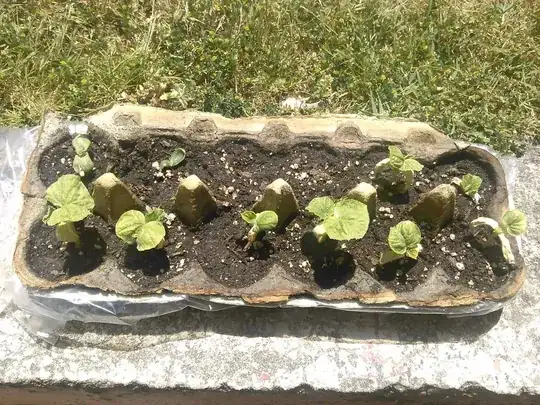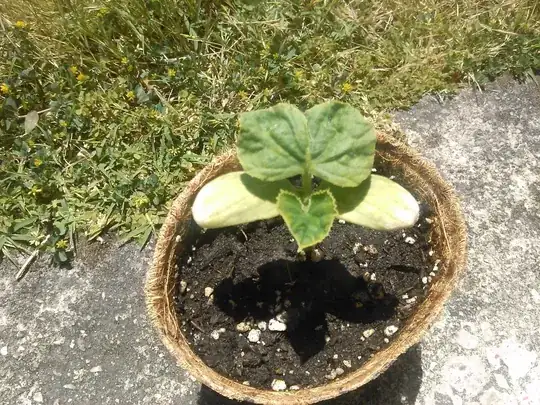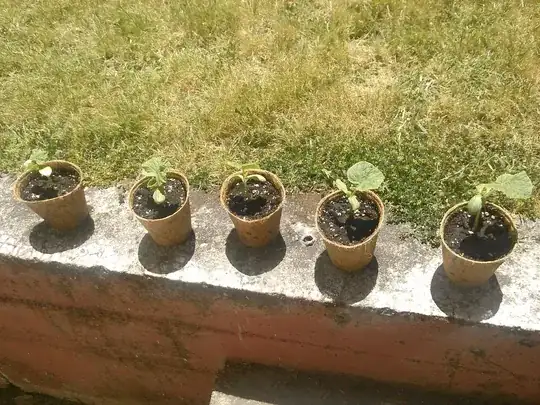I am growing cucumbers in pots to transplant. Some of them are doing well. But on others the cotyledons turn yellow and shrivel before the true leaves get big enough to grow. The seedlings stay stunted. Some have died.
I don't know if the problem is disease, nutrient lack, or pest. But it seems to be spreading from the sick to the healthy.
Any ideas on diagnosis and treatment?
ADDED INFORMATION:
Whatever it is, it seems to be spreading from seedling to seedling. When it infects the plant, the plant stops growing. That makes me think it is a pest (maybe mites) or a virus. Unfortunately, I think the seedlings will be a total loss, including the ones in the ground. Only three seem to be thriving, and I guess it's too late to just isolate those.
I'll guess I'll have to start over and try again.
ADDED INFORMATION:
Stormy, thanks for your comments. I sprouted the seeds in a wet paper towel and then planted the sprouts in egg cartons using Miracle-Gro Moisture Control Potting Mix. At first I had them in a sunny window and then gradually moved them outside most of the day. I usually water them once a day, but sometimes skip a day.
The seedlings in one egg carton have done quite well, so I planted some in the ground and re-potted the others in 3 inch pots.
Here are the seedlings in the barely alive egg carton:
Here is a top view and side view of a plant just turning sickly.
Here is a row of potted seedlings, some of which seem to be thriving and some starting to sicken.



